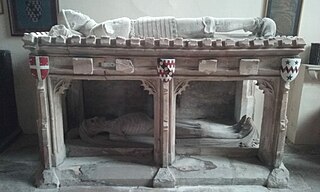
Oxfordshire is a landlocked county in South East England. The ceremonial county borders Warwickshire to the north-west, Northamptonshire to the north-east, Buckinghamshire to the east, Berkshire to the south, Wiltshire to the south-west and Gloucestershire to the west.

Berkshire is a county in south-East England. One of the home counties, Berkshire was recognised by the Queen as the Royal County of Berkshire in 1957 because of the presence of Windsor Castle, and letters patent were issued in 1974. Berkshire is a county of historic origin, a ceremonial county and a non-metropolitan county without a county council. The county town is Reading.

Buckland is a village and civil parish in Aylesbury Vale district in Buckinghamshire, England. The village is near the boundary with Hertfordshire, close to Aston Clinton. The hamlet of Buckland Wharf is in the parish. It takes its name from its wharf on the Wendover Branch of the Grand Union Canal that passes through the parish.

The county of Oxfordshire in England was formed in the early years of the 10th century and is broadly situated in the land between the River Thames to the south, the Cotswolds to the west, the Chilterns to the east and The Midlands to the north, with spurs running south to Henley-on-Thames and north to Banbury.
Robert D'Oyly was a Norman nobleman who accompanied William the Conqueror on the Norman Conquest, his invasion of England. He died in 1091.

Abingdon Abbey was a Benedictine monastery also known as St Mary's Abbey located in Abingdon, historically in the county of Berkshire but now in Oxfordshire, England.
Spearhafoc was an eleventh-century Anglo-Saxon artist and Benedictine monk, whose artistic talent was apparently the cause of his rapid elevation to Abbot of Abingdon in 1047–48 and Bishop-Elect of London in 1051. After his consecration as bishop was thwarted, he vanished with the gold and jewels he had been given to make into a crown for King Edward the Confessor, and was never seen again. He was also famous for a miracle which impacted his career.

Besselsleigh or Bessels Leigh is a village and civil parish about 4 1⁄2 miles (7 km) south-west of Oxford. Besselsleigh was part of Berkshire until the 1974 boundary changes transferred it to Oxfordshire.

Drayton is a village and civil parish about 2 miles (3 km) south of Abingdon, Oxfordshire. It was part of Berkshire until the 1974 boundary changes transferred it to Oxfordshire. The parish includes the hamlet of Sutton Wick. The 2011 Census recorded the parish population as 2,353.

Henry de Ferrers, magnate and administrator, was a Norman who after the 1066 Norman conquest was awarded extensive lands in England.
Ælfric of Abingdon was a late 10th-century Archbishop of Canterbury. He previously held the offices of abbot of St Albans Abbey and Bishop of Ramsbury, as well as likely being the abbot of Abingdon Abbey. After his election to Canterbury, he continued to hold the bishopric of Ramsbury along with the archbishopric of Canterbury until his death in 1005. Ælfric may have altered the composition of Canterbury's cathedral chapter by changing the clergy serving in the cathedral from secular clergy to monks. In his will he left a ship to King Æthelred II of England as well as more ships to other legatees.

Historically, the English county of Berkshire has been bordered to the north by the ancient boundary of the River Thames. However, much of the border with Oxfordshire in the western part of the county was moved in 1974.

Fyfield is a village in Fyfield and Tubney civil parish, about 4.5 miles (7 km) west of Abingdon. It was part of Berkshire until the 1974 boundary changes transferred it to Oxfordshire. The village used to be on the main A420 road between Oxford and Faringdon, but a bypass now carries the main road just south of the village.

The de Birmingham family held the lordship of the manor of Birmingham in England for four hundred years and managed its growth from a small village into a thriving market town. They also assisted in the invasion of Ireland and were rewarded with the Barony of Athenry. They were stripped of most of their lands in England by the notorious John Dudley, Duke of Northumberland, who held sway over the young King Edward VI (1547-1553).

Chesterton is a village and civil parish on Gagle Brook, a tributary of the Langford Brook in north Oxfordshire. The village is about 1 1⁄2 miles (2.4 km) southwest of the market town of Bicester. The village has sometimes been called Great Chesterton to distinguish it from the hamlet of Little Chesterton, about 3⁄4 mile (1.2 km) to the south in the same parish. The 2011 Census recorded the parish population as 850.
The Historia Ecclesie Abbendonensis or History of the Church of Abingdon was a medieval chronicle written at Abingdon Abbey in England in the 12th century. The Abbey was historically in the county of Berkshire, but since 1974 has been in the county of Oxfordshire.
Hugh de Bocland or Hugh of Buckland, was sheriff of Berkshire and several other counties.

John Golafre was an English courtier and Member of Parliament.
Godric or Godric the Steward or Godric dapifer was an Englishman around the time of the Norman Conquest.












